How to Choose the Perfect Makeup for Your Color Season

Key Takeaways
Know your color season and make every decision from foundation to lipstick and even accessories a breeze. Begin with a complimentary quiz or industry analysis to chart your individual palette.
💫 Discover Your Complete Color Palette
Ready to discover all the colors that make you look radiant? Our comprehensive color analysis will reveal your complete personal palette - perfect for hair, makeup, and wardrobe decisions.
Take Color Analysis Quiz →Find your undertone, value, contrast and chroma to narrow down your season and sub-season. Take simple checks — vein color, ring test, feature contrast — to help guide your shade selections.
Go with your season makeup. Keep textures and finishes aligned as well such as dewy for spring, soft and sheer for summer, creamy and matte for fall, and crisp and defined for winter.
Let's cheat the seasons and adapt our formulas to the weather so your makeup actually behaves in real life! Apply lightweight, hydrating and SPF-forward formulas in warm months and richer, protective selections in cooler ones.
Prep and protect skin as your canvas. Every day, cleanse, gently exfoliate, hydrate and apply broad-spectrum SPF to maintain even tone and smooth application.
Instead, adapt seasonal color theory in a way that respects your features, your climate, your culture. Create a sustainable capsule kit with refillable, cruelty-free products that capture your best colors all year round.
Season makeup means adjusting shades, textures, and routines to align with weather, light and skin needs throughout the year.
Spring favors soft shades and dewy skin. Summer loves SPF, light bases and shine control. Fall presents us warm earth tones and cream-based textures. Winter requires more decadent moisture, satin finishes and daring lips.
To strategize a savvy kit, consider climate, skin type, and wear time. The following sections detail steps, products, and simple swaps for every season.
📚 Recent Articles
Understanding your color season

Color season is a grouping of people based on their natural coloring into spring, summer, autumn, or winter. This seasonal color palette is great for matching makeup to your skin tone, hair colors, and eye colors, ensuring that shades sit well and look seamless. Knowing your spring color season accelerates decisions for clothes and accessories. If you're still uncertain, try a free color season quiz or schedule a color analysis to sample your personal color palette in real life.
1. Skin undertone
Undertone is the foundational temperature of your coloring. Warm undertones appear golden, peachy or yellow. Cool undertones tend toward pink, blue, or even a slight purple tinge. A lot of people fall neutral, where neither side takes precedence.
Quick checks do help. Green-looking veins usually indicate warm, and blue or purple ones give cool hints. If gold and silver jewelry look equally good you may be neutral. Experiment with a simple white shirt in daylight, so as not to have any color cast from walls or bulbs.
Undertone guides foundation, blush and lip selections. Warm seasons (spring, autumn) tend to love golden-beige base, apricot or terracotta blush and coral or warm red lips. Cool seasons (summer, winter) pull to rosy or neutral-beige base, cool pink or berry blush, and blue-red or plum lips. If you are neutral, try both families, then mark which blend erases lines and uplifts the face.
2. Value and contrast
Value refers to how light or deep your skin, hair, and eyes appear together, which is essential in understanding your seasonal color palette. Contrast highlights the differences between these features; for instance, high contrast—such as dark hair with light skin and bright eyes—often aligns with winter palettes. In contrast, low contrast features, which are close in depth, typically correspond to summer or certain autumn varieties, helping you identify your personal color palette.
To simplify your analysis, associate your profile with timeless examples. Light hair, pale skin, and light eyes might suggest a light spring color palette, while deep features could indicate deep autumn or deep winter. By building a simple table of your hair, skin, and eye values, you can compare them with seasonal portraits from reliable charts, facilitating your seasonal color analysis.
This method helps identify patterns quickly, making it easier to select clothing colors that enhance your natural beauty. Focusing on warm undertones and bright spring colors can elevate your overall appearance and ensure you choose the most flattering makeup colors.
3. Chroma intensity
Chroma is color intensity. If your features appear crisp and clear, you probably fall into the bright spring or bright winter categories. If they look soft or smokey, soft summer or soft autumn might be a better fit.
High chroma calls for pure pigments: true red, cobalt, fuchsia, crisp teal. Low chroma fares better with gentle greys, dusty rose, moss and muted plum.
Use chroma to narrow down selections within your season. About knowing your color season and listing best colors that brighten your eyes and worst shades that dull your skin. Carry that list in your phone for a quick double-check.
4. The twelve seasons
The four-season color theory maps to twelve sub-seasons: light spring, warm (true) spring, bright spring, light summer, cool (true) summer, soft summer, soft autumn, warm (true) autumn, deep autumn, deep winter, cool (true) winter, bright winter. Each sub-season mixes undertone (warm/golden or cool/ashy) with value and chroma.
Warm spring skews golden and fresh, soft summer leans cool and muted, deep winter is cool, dark and high contrast. This more specific grid comes in handy when the fundamental four seem too general.
Other individuals fall between two seasons because their coloring has common characteristics and some are neutral or mixed and don't fit neatly. Hair color shifts can push you up or down the scale, because depth and undertone of hair does as well.
Consult your color blend chart to identify where your characteristics converge, but be open. While season guides are useful, rules can suppress play and taste.
Makeup for your season
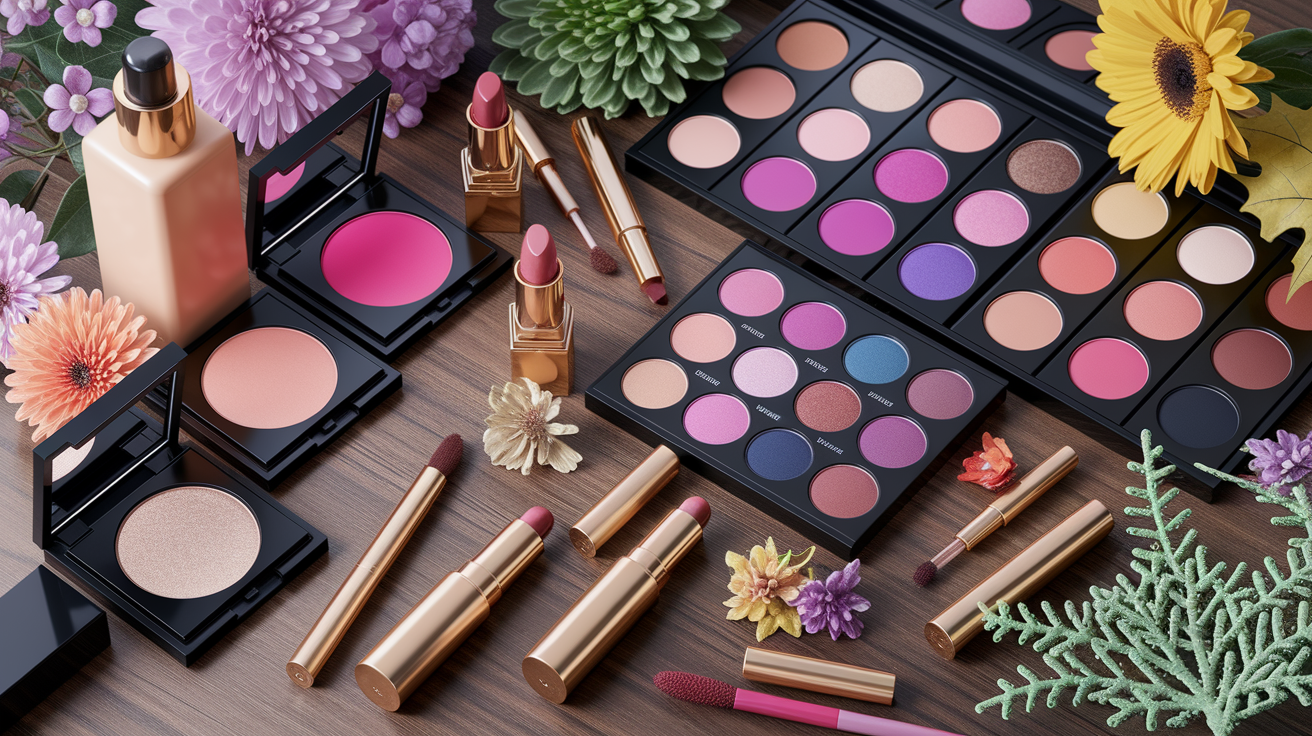
Seasonal color analysis categorizes people by the combination of eye, skin, and hair color into four palettes—Spring, Summer, Autumn, Winter—each with a few variations such as Light Summer or True Autumn. The goal is simple: pick shades that echo your natural coloring, skip tones that clash with your undertone, and build a kit—base, blush, eyes, lips—that stays inside your color family.
It's practice to find your season, and some say the method is old-fashioned, but the underlying color theory still assists you to try looks with intention.
Spring
Think warm, fresh, vibrant. The Spring palette leans warm-neutral with medium to light overtones, so soft, sunlit colors tend to be most flattering. Coral lipsticks, peachy blushes and golden eyeshadow wake up the face without weight.
Light pastel blue, light turquoise, and soft peach flatter Light Spring and Warm Spring, particularly when the base remains sheer. Go for a dewy look—tint or superfine powder foundation, cream blush, a swipe of gloss. It reflects the season's brightness and keeps depth at bay.
Best shades to stock: warm pinks, honey hues, golden beige, soft apricot, light teal, and mellow gold. Steer clear of cool plums or ash browns that drape the skin in dullness.
Summer
Cool, soft and muted tones work here. Consider rosy pinks, lavender purples, soft greys—colors that have blue undertones and that quietly settle onto your skin. Light Summer and Soft Summer demand sheer washes, not thick pigment.
A pink balm, misty taupe shadow, and a grey-brown lash line keep the look calm. Opt for pale grey liner instead of black. Think soft blues, lilac and dusty rose. Stick to satin or soft matte finishes to echo Summer's low contrast.
Avoid over warm or sharp hues — tomato red, orange and brassy bronze will dominate delicate coloring and make skin appear sallow.
Autumn
Rich, earthy, warm tones ground Autumn, evoking a forest in the midst of turning. Deep oranges, warm browns and golden yellows really bring out the warmth and depth in your hair & skin. Bronze, copper and orangey reds add glow but not glare.
They flatter Soft Autumn through True Autumn when leaned richer or softer as needed. Creamy mattes for that cozy feeling — cream bronzer, matte terracotta blush, suede-finish lips. Create a kit filled with browns, olives and gold.
Go for russet lipstick, moss or olive eyeshadow and amber highlight. Steer clear of icy pinks or cool greys – they battle Autumn's warmth and wash out the face.
Winter
Winter colors work best in cool, bold, high-contrast shades. Deep blues, crisp silvers and jewel tones—sapphire, emerald, amethyst—mirror the season's clarity. True Winters wear decisively cool tones.
Cool Winters have bright, contrasting characteristics. Icy shades, hot pink and bright red lipstick pop on fair or deep cool skin. Keep lines sharp: liquid liner, defined brows, clear edges on lips.
Opt for bright fuchsia, blue-red, and icy taupe, set with satin or high-shine accents, not warmth. Avoid warm or muted hues—peach, camel and dusty coral silences Winter's inherent sparkle.
Adapting formulas and textures
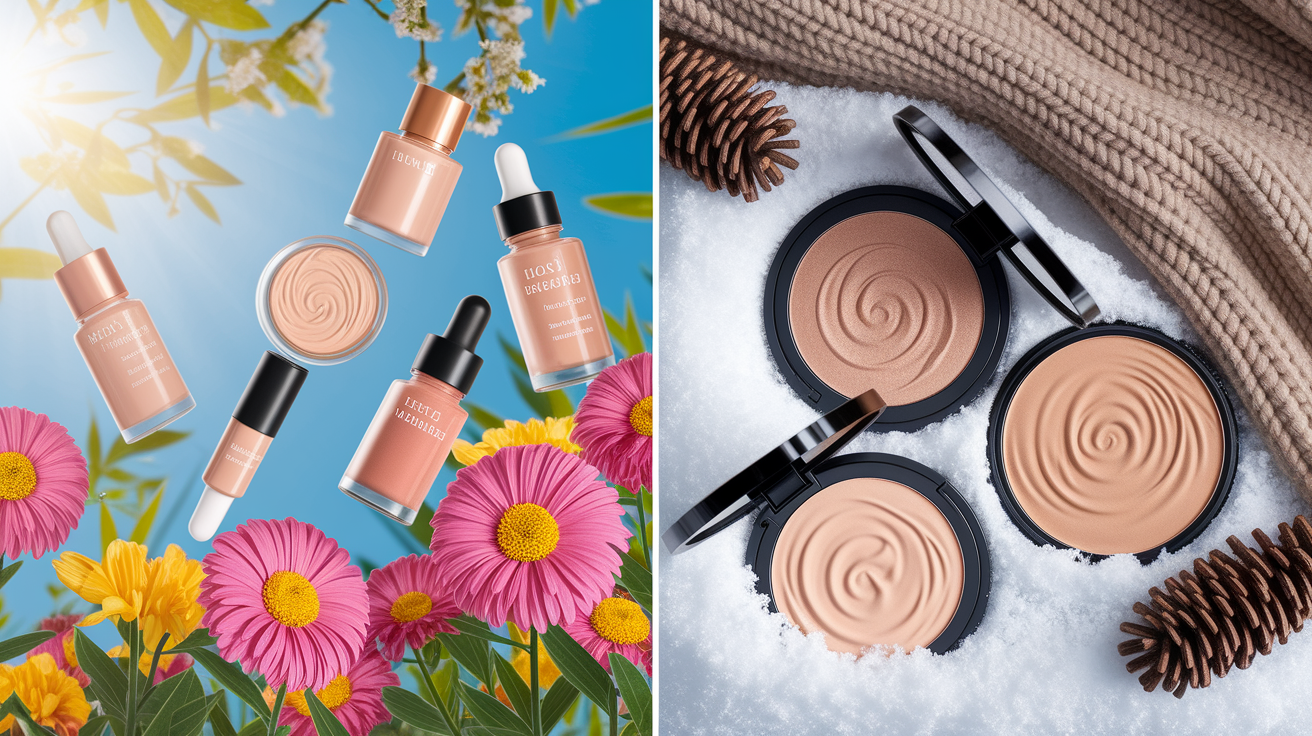
Seasonal shifts alter humidity, temperature and skin behavior — so formulas and textures must flex. Heavy foundations feel stifling and crumble when the atmosphere shifts from arid to humid. Lighter, hydrating blends for heat, richer, protective creams for cold.
Powders assist in humidity for oily zones, while creams add comfort in dry months. Switching textures and layering—cream under powder, for example—keeps skin even, luminous and festive without getting too heavy.
Weather effects
Hot, humid weather demands long-wear, sweat-resistant formulas with thin, breathable layers. A lightweight, water-resistant foundation or tinted gel smooths tone without clogging, making it essential for those who embrace the bright spring color palette. Adapt your formulas and textures to suit your seasonal color palette.
Dry, cold climates require moisturizing and nourishing measures. Opt for cream or balm blush, hydrating concealer, and a satin foundation with ceramides or glycerin to protect the skin barrier. A drop of face oil stirred into the base can prevent flaking around the nose and mouth, ensuring a radiant appearance even in harsh conditions.
Skin tone changes with the seasons, so check in again on your foundation and concealer shades. Many of us tan in summer and chill in winter. Generally, I take two shades and blend them on the neck, as using several foundations often appears more natural and seamless, especially for those with a warm undertone.
Update your makeup bag each season: swap mattifying primer for hydrating primer in winter, and trade rich cream bronzer for gel or powder in heat. Tiny tweaks keep things from pilling and patchiness as a drying climate shifts how makeup adheres onto skin, allowing you to maintain your natural beauty throughout the spring color season.
Product performance
Test wear time and finish in real life—commute heat, office AC, evening affair. Notice where products smudge or crease. Layering powder highlighter atop cream blush creates a glow that lasts all night and introduces interesting depth by mixing mediums. During the spring color season, the emphasis on bright springs and warm undertones can enhance your overall appearance.
Tip 3: Adapt formulas and textures. Spring and summer call for an emphasis on SPF and hydration, so seek out broad spectrum SPF 30+ and humectants. For fall and winter, choose barrier-protecting ingredients such as squalane and ceramides to mitigate transepidermal water loss. As you explore your personal color palette, remember that tones and textures vary with light and temperature. Dewy bases can appear greasy outside in the heat, while matte powders can seem flat in dry indoor air.
Concealer first because it prevents pilling when you add powder later, but it keeps creamy layers smooth through the day. As you consider your seasonal palette, be sure to balance light colors with the right makeup colors for your skin undertones.
| Season | Base | Key add-ons | Notes |
|---|---|---|---|
| SPRING | Moisturizing tint | SPF 30+, cream blush | Light layers, fresh hue |
| SUMMER | Long-wear tint | Mattifying powder | Set T-zone, sweat harness |
| AUTUMN | Satin foundation | Squalane primer | Soft warmth, stretchy wear |
| WINTER | Rich cream base + ceramide balm | Seal edges, no flakes |
Application techniques
Go lighter in summer. Sheer layers of tint, spot-conceal, then set only where needed. A lightweight veil calms skin when humidity strikes and prevents caking.
Switch up your formulas and textures. Begin with concealer to even redness, then apply a satin foundation in thin passes with a damp sponge. This order keeps it from smearing and flaky spots on dry patches.
In dry weather, blend cream products with your fingers – the heat helps melt edges for a skin-like look. In humidity, use brushes for powders to keep texture crisp and prevent pore overload.
Seasonal tips:
- Foundation: Mix two shades for a perfect match as tone changes.
- Blush: Cream first, then a light dust of powder on top for hold and dimension.
- Eyeshadow: Cream base in winter for grip. Set with powder in summer for crease control.
- Finish: Blend cream and powder textures to reflect light in soft layers.
Your seasonal skincare canvas
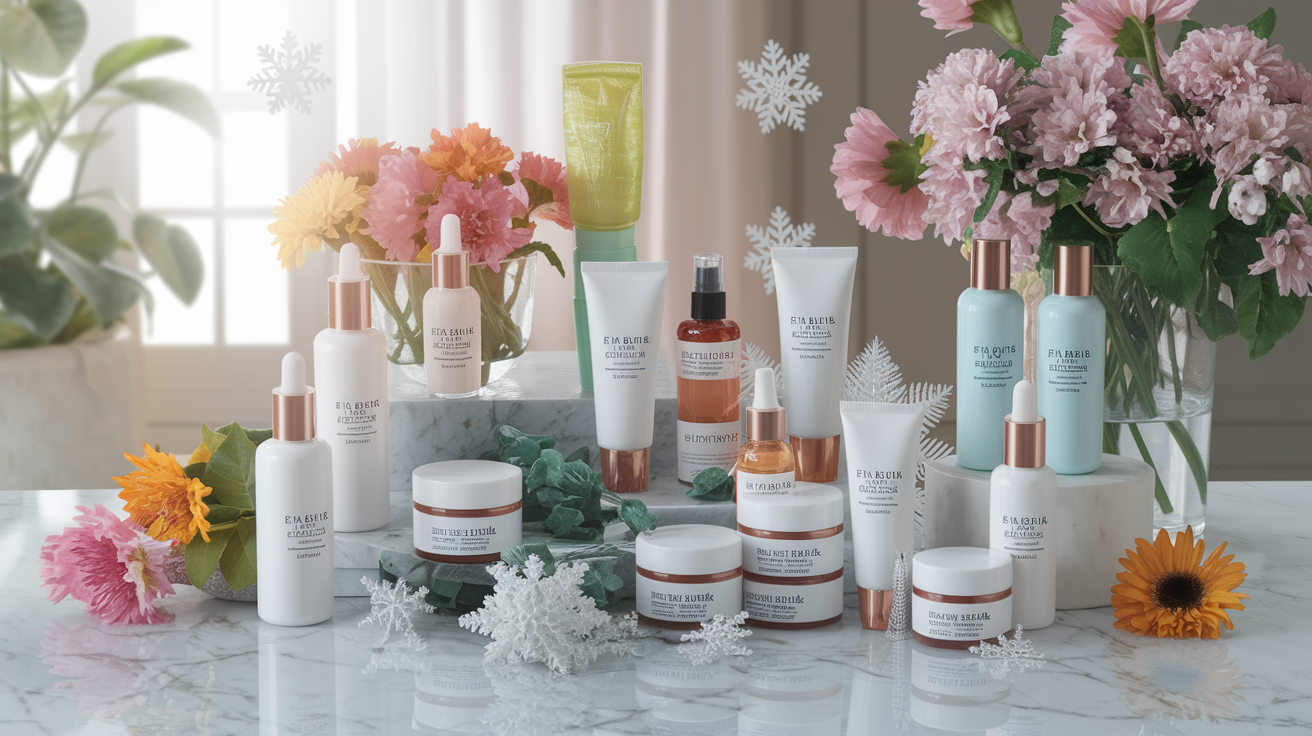
A solid foundation transforms the way pigment rests, moves, and endures. Seasonal prep means tuning texture, moisture and protection so makeup glides on and matches undertone. It connects to 12 color seasons, which categorize people by skin, hair and eye harmony into Spring, Summer, Autumn and Winter, each with further subtypes like Light Summer, Soft Autumn or Dark Winter.
Understanding your canvas informs you in selecting shades that flatter you – just as cool undertones are drawn to silver and warm undertones to gold.
Prepping the skin
Begin with cleanse + exfoliate. A gentle gel or milk cleanser morning and night keeps congestion low. Exfoliate 1–3x/week with a gentle acid (lactic at 5–10%) to reveal drab cells and reveal real skin tone — making your match and seasonal palette read more accurate.
Hydration encounters seasonal incidence. For dry winter air, use a cream with ceramides and glycerin. For humid summer, grab a light gel or emulsion. A hyaluronic acid fills lines so foundation blends smooth instead of snagging. If you're oily, go for a water-based, non-comedogenic layer and a blurring primer just on your T-zone.
Hit what you see. Redness from wind or heat? A niacinamide or azelaic acid serum calms and evens, so less concealer reads better. Drab tone pre-gala? Vitamin C serum (10–15%) in the morning wakes up skin and keeps color clear. Flaky patches? Spot-treat with a balm overnight, then sheer foundation instead of slathering on layers.
Complete by refining texture. Press moisturizer, don't rub. Give it a few, maybe 3-5 minutes before make-up so layers set. Test undertone cues while bare: if silver brightens you, you likely lean cool (think Summer/Winter families); if gold lifts you, you likely lean warm (often Spring/Autumn).
This aids select base, blush and lip families that compliment your season, such as Light Spring peaches or Dark Winter cool berries.
Protecting the skin
Daily SPF is essential to maintain an even skin tone and prevent spots that can disrupt your seasonal color palette. Choose broad-spectrum SPF 30+ for most days and SPF 50 for high sun or altitude conditions. Remember to reapply every 2–3 hours when outdoors. For those who wear makeup, a spray or powder SPF is an excellent choice to maintain a bright appearance.
Protecting your skin's membrane is crucial. Antioxidants like vitamin C or ferulic acid help prevent pollution damage and keep Winter's cool colors from appearing ashy on stressed skin. Look for ceramides, squalane, and panthenol to heal your skin after exposure to cold winds or indoor heat during the spring color season.
During steamy months, consider adding green tea or resveratrol for those particularly sweaty days. Sunscreen touch-ups are vital too. Cushion compacts with SPF or a clear stick can help protect areas like the nose and cheekbones. If you experience oil breakthrough, blotting followed by pressing SPF powder can help maintain your overall coloring.
- Spring: lightweight SPF gel; vitamin C; glycerin lotion; peachy makeup that suits warm-neutral skin.
- Summer: fluid SPF; niacinamide; light emulsion; soft cool blush for Light/Dusty Summer moments.
- Autumn: cream SPF; ceramide balm; azelaic acid; warm browns that echo Soft/True Autumn.
- Winter: SPF 50 fluid; panthenol serum; richer cream at night; cool reds and deep purples for Dark/True Winter.
A global view on seasonal beauty
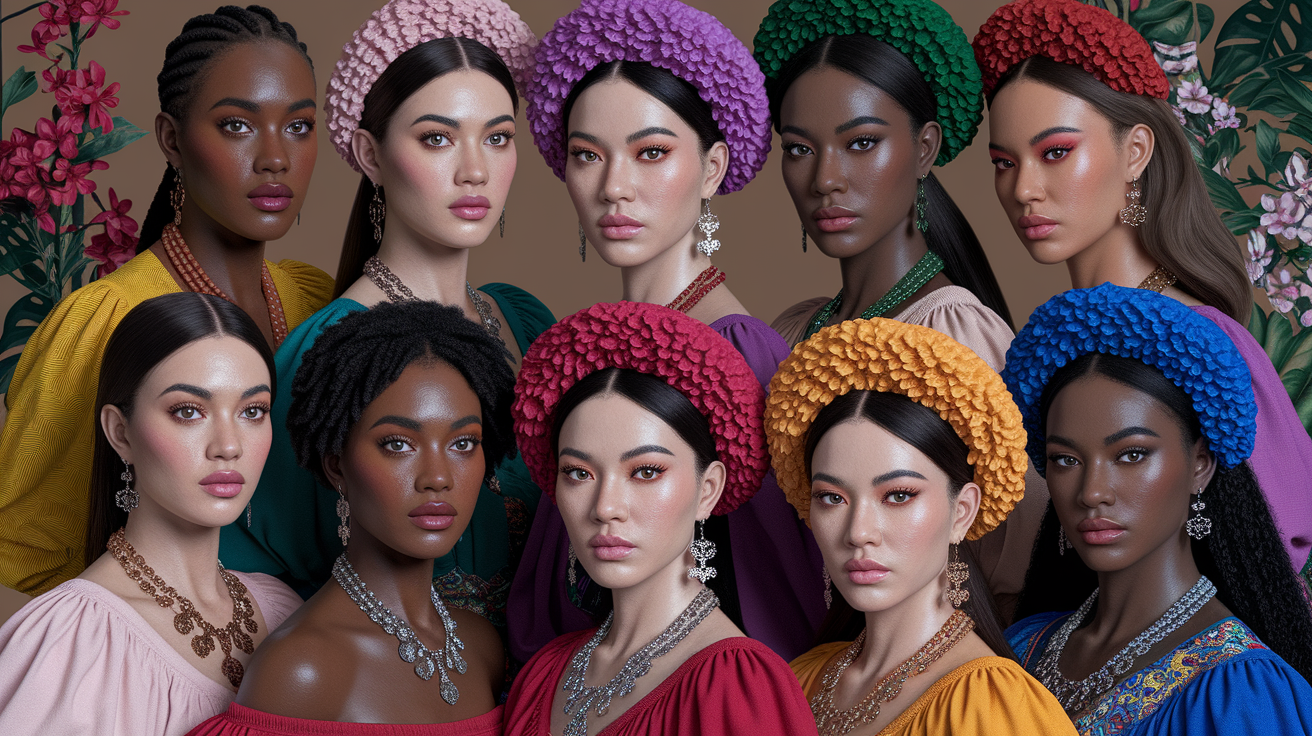
Seasonal color analysis reveals that makeup choices vary significantly based on skin tone, warm undertone, lighting, environment, and culture. Color season theory works best when it bends, allowing for a true spring aesthetic rather than boxing people in. Brands recognize this too: four in five people say skin needs change year-round, leading to a demand for a seasonal color palette that fits across various geographies.
| Culture/Region | Spring tones | Summer tones | Autumn tones | Winter tones |
|---|---|---|---|---|
| East Asia | soft peach, warm coral | cool rose, muted plum | persimmon, tea-brown | ink black, blue-red |
| South Asia | marigold, warm pink | dusty mauve, cool taupe | saffron, terracotta | ruby, deep fuchsia |
| Middle East/North Africa | apricot, gold-beige | cool date-rose | henna, bronze | black kohl, blue-violet |
| Sub-Saharan Africa | melon, coral-red | cool berry, taupe | copper, pumpkin | bold fuchsia, deep burgundy |
| Europe | peach, light coral | cool pink, soft lavender | olive, rust | cherry red, espresso |
| Americas (varied) | warm nude, salmon | cool nude, berry | cacao, chili | true red, deep plum |
Cultural harmony
Color seasons can celebrate different beauty standards without eliminating them. A cool "Winter" red may look different in Seoul, Lagos, or São Paulo, but the core idea stays: high contrast, clear tones. Local style, flowers, and dyes influence the selection — consider kohl-lined eyes at winter weddings or henna's warmth in fall fashions. During the spring color season, vibrant shades like marigold and light colors can enhance your overall appearance.
Use traditional colors and themes as your mooring. Match marigold lids with fresh liner for a bright spring color palette glow at fests. Go for indigo accents with a regional textile inspiration for a Winter night look. Draw from local flowers—bougainvillea pink, jacaranda lilac, hibiscus red—then adjust the intensity for your seasonal palette.
Compensate for undertone and hair depth. Olive skin can mute pastels, so a Summer palette skews smoky mauves, not baby pinks. Deep skin with cool undertones wears Winter jewel tones beautifully, while warm undertone individuals shine in Autumn copper and mango.
Infuse heritage into your color scheme. Keep one signature shade year-round—blue-red lipstick, saffron blush, or kohl—then flex the texture by season: stain in heat, cream in cold, to align with your personal color palette.
Climate considerations
Weather dictates wear, shade and finish. Little moves count; a small 5 °C change can mess skin up. In winter, dryness takes hold, so richer bases and balm textures assist. In the summer, sun and sweat alter the scheme, and SPF reigns supreme.
Light changes colour read. Short winter days demand bolder, clearer tones, or you risk looking washed out. Long, luminous summers render sheer washes fresh and precise.
- Spring: gel tints, light cream blush, flexible SPF 30+, smudge-proof brown liner suits humid bloom and mild rain.
- Summer: mineral SPF 50, tubing mascara, water-resistant bronzer, setting spray. Holds in heat and high UV.
- Autumn: satin foundations, copper/olive shadows, hydrating lipstick. balances wind and cooler air.
- Winter: ceramide primer, cream blush, balm highlighter, SPF 30. Fights dry indoor heat and cold air.
Our buying habits follow them. SPF and long wear spike in summer, rich moisturizers and kohl sets surge in winter and holidays. Brands navigate demand swings, shade requirements and competitors — which is why our shelves don't look the same month to month.
Sustainable seasonal choices
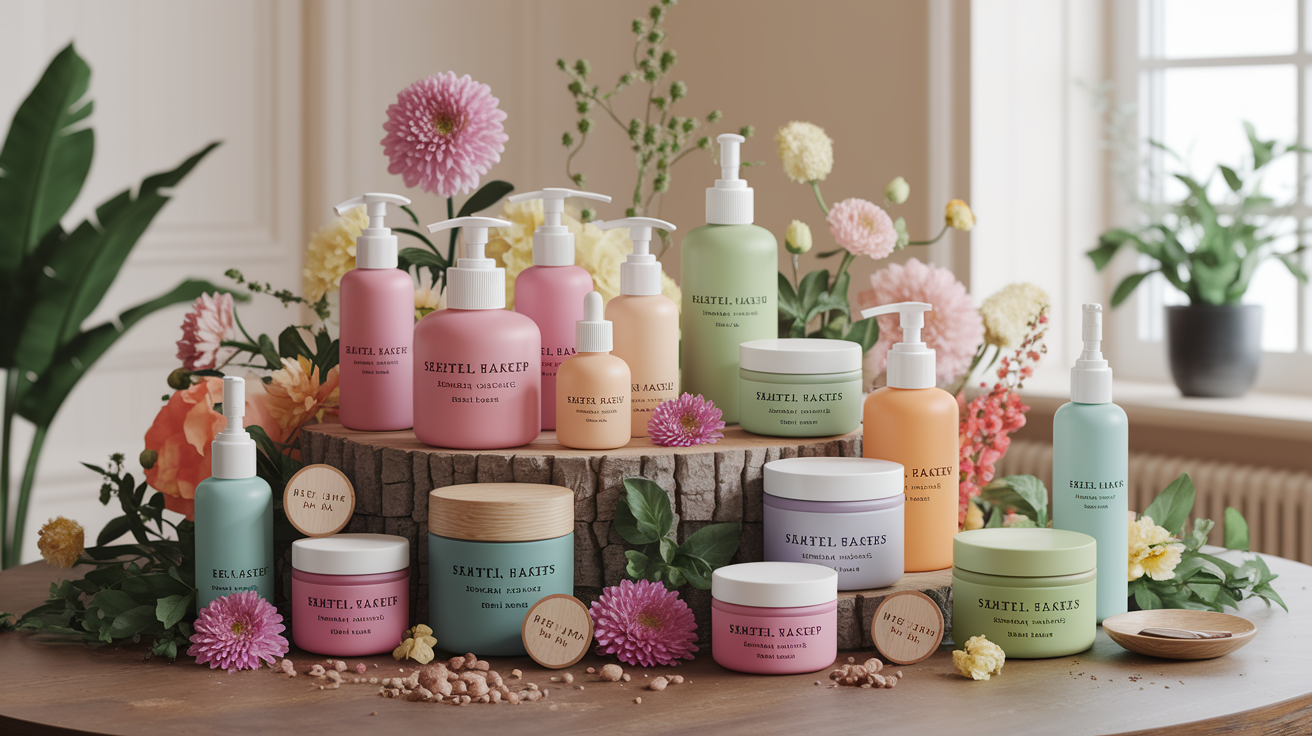
Sustainable season makeup focuses on choosing shades that align with your personal color palette, particularly for the spring color season, while minimizing waste and keeping your kit light.
Select eco-friendly and cruelty-free makeup brands that offer seasonal color palettes.
Look for clear labels: cruelty-free, vegan, low-waste, and third-party verified. A lot of brands now curate shades by season, which makes matching undertones quick. Warm seasons (Spring or Autumn) have skin and hair that often hold golden undertones with deeper coloring, so coral blush, terracotta lips and olive-based bronzers tend to blend seamlessly.
For cool seasons (Summer or Winter) think undertone, not contrast – rose blush, cool mauve lips and ash-brown brows typically lay better on the skin. If you had an obvious season such as a Spring or Winter, you most likely show an excellent contrast between your skin, hair and eyes, with deep winters especially able to take strong, pure colors such as true red or charcoal.
Light people (Spring or Summer) tend to have light hair and light skin for their ethnicity, so soft pinks, pastel peach and airy taupe can be balanced looking. These links lead to seasonal color analysis, which associates hues with nature signals — pastel pink blossoms in the spring, deep red leaves in the fall — and numerous users report that having a palette makes daily selections easier and more flattering.
Opt for refillable packaging and multi-use products to reduce waste throughout the year.
Refillable lipstick bullets, powder pans and palettes slashes plastic and reduces cost per use. Start with a small magnetic palette: slot in a soft brown, a deep neutral, and a highlight that fits both cheek and eye. Multi-use sticks cover lip, cheek and eye all in one swipe; switch shades by season—earthy brown in fall, fresh coral in spring, cool berry in winter and muted rose in summer.
Opt for glass or aluminum wherever you can — both recycle well in most areas. When it's out of a product, save the case and swap in just a new insert.
Support local and ethical suppliers for seasonal cosmetics and skincare.
Local makers tend to source regionally, which slashes freight emissions and aids in ingredient traceability. Look for transparent supply chains, ethical labor notices, and fundamental safety testing. Purchasing close to home allows you to swatch shades in natural light, which is important for undertones.
Warm, gold skin may turn from honey in sun to caramel in shade. Testing local assists you in obtaining the appropriate level and depth, without having to guess.
Encourage mindful purchasing by building a capsule collection of seasonal makeup essentials.
Set a tight core: one base, one corrector, one brow, one liner, one mascara, two lip-and-cheek shades (warm and cool), and a small eye trio. Add seasonal accents—rich golds and earthy browns in the fall, icy highlighter and a ruby lip in the winter, pastel peach and mint in the spring, dusty rose and gray-taupe in the summer.
Review every 6 months, top-up what you use and avoid dupes. Know what gets daily wear, and release the rest.
Conclusion
To summarize, season makeup is most effective with simple, obvious actions. Match tone, depth and finish to your own shade map. Spring is warm and light leaning. Summer keeps cool and soft. Autumn offers up rich, warm notes. Winter contains cool, bold lines. Keep your complexion in tune with skin demands. Light gel for humid heat. Cream or balm for dry, cold air. Exchange colors with the sun and clouds, not fads.
Real life test comes to the rescue. Go for a coral lip at noon light. Verify a plum blush at dusk. Note what brings your face up quick.
To keep it green, shop less, apply more, and refill select.
Need a quick seasonal and climate plan? Leave your season, skin type, and city in the comments. I'll post a quick set-up.
Frequently Asked Questions
What is seasonal color analysis in makeup?
Seasonal color analysis pairs your warm undertone, depth, and contrast with a specific season (Spring, Summer, Autumn, Winter). This process helps determine your seasonal palette for foundation, blush, eyes, and lips, ultimately enhancing your natural beauty for a fresher, brighter appearance.
How do I find my color season at home?
Examine your undertone in neutral light by considering warm undertones versus cool colors, such as silver vs. gold and white vs. cream. Observe your eye colors and hair colors for overall contrast. If unsure, consider taking a free color season quiz or consult a certified color analyst.
Do seasonal palettes limit my makeup choices?
No. They direct, not confine. Begin with basic flattering colors from your seasonal color palette, then have fun! You can alter depth, temperature, and saturation to suit trends, occasions, and style while staying close to your warm undertone for equilibrium.
Which makeup formulas suit each season best?
Light, sheer, and fresh finishes win out for the bright spring color palette. For summer, soft, cool, and airy textures are best. Rich, velvety, and warm formulas suit autumn. Crisp, high-contrast, and polished finishes flatter winter, aligning with your seasonal color palette and skin type.
How should I adapt makeup for different climates?
In heat and humidity, opt for lightweight, sweat-proof options that complement your warm undertone. In cold, dry air, choose hydrating bases and creamy textures while prepping with season-appropriate skincare to enhance your overall coloring and natural beauty.
Can seasonal makeup be inclusive of all skin tones?
Yes. For each season, including the bright spring color palette, the entire shade range is essential. Emphasize warm undertone, depth (light to deep), and saturation while selecting foundations and cosmetics that match your overall coloring.
How do I make seasonal beauty more sustainable?
Invest in less, multifunctional items in your most flattering hues from your seasonal color palette. Opt for recyclable packaging and use it up before you swap! Choose multitasking sticks and palettes that align with your warm undertone and support brands with transparent ingredient policies.